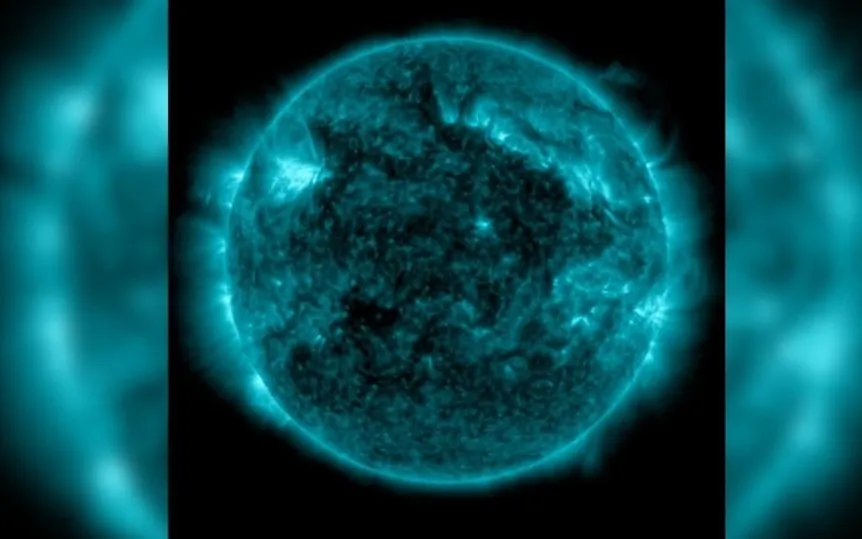Most powerful solar flare in six years unleashed by hyperactive sunspot
A sudden increase in solar activity has drawn the interest of astronomers and space weather enthusiasts, as a highly active sunspot produced its third X-class solar flare in just one day. This extraordinary sequence of events represents the strongest solar eruption in six years, prompting worries about potential effects on Earth’s space environment.
The latest flare, designated X6, originated from sunspot AR3590, a huge dark spot on the Sun’s surface that stretches several times the size of Earth. This eruption, which occurred on February 22, follows two previous X-class flares recorded on February 21, each with magnitudes X1.8 and X1.7. However, the X6.3 flare dwarfs its predecessors, presenting the sun’s most powerful outburst since 2017.
The significance of these solar flares is greater than their mere size. They serve as a harbinger of the approaching solar maximum, the peak of the Sun’s 11-year activity cycle characterized by increased solar flares and magnetic disturbances. Space.com reports that as the current solar cycle continues through 2019, scientists expect even stronger and potentially more destructive solar storms in the coming years.
While none of the recent flares trigger coronal mass ejections (CMEs), clouds of magnetized plasma that can affect Earth’s magnetosphere and trigger geomagnetic storms, they do send waves of radiation toward our planet. These bursts of radiation caused temporary radio outages and raised concerns about possible disruptions to communication systems and satellite operations.
The volatile nature of sunspot AR3590 adds to the fear, with experts warning of the possibility of further X-class explosions. Its unstable magnetic field offers the potential for more violent eruptions that can propel significant CMEs toward Earth and potentially disrupt power grids, GPS systems, and satellite communications.
The recent increase in solar activity highlights the dynamic and unpredictable nature of our sun. Although solar flares are a natural part of the solar cycle, their increasing frequency and intensity highlight the importance of continued research and monitoring efforts to better understand and mitigate their potential impact on our technology-dependent society. As scientists continue to study these phenomena, vigilance and preparedness are critical to protecting against the harmful effects of solar storms in the future.




